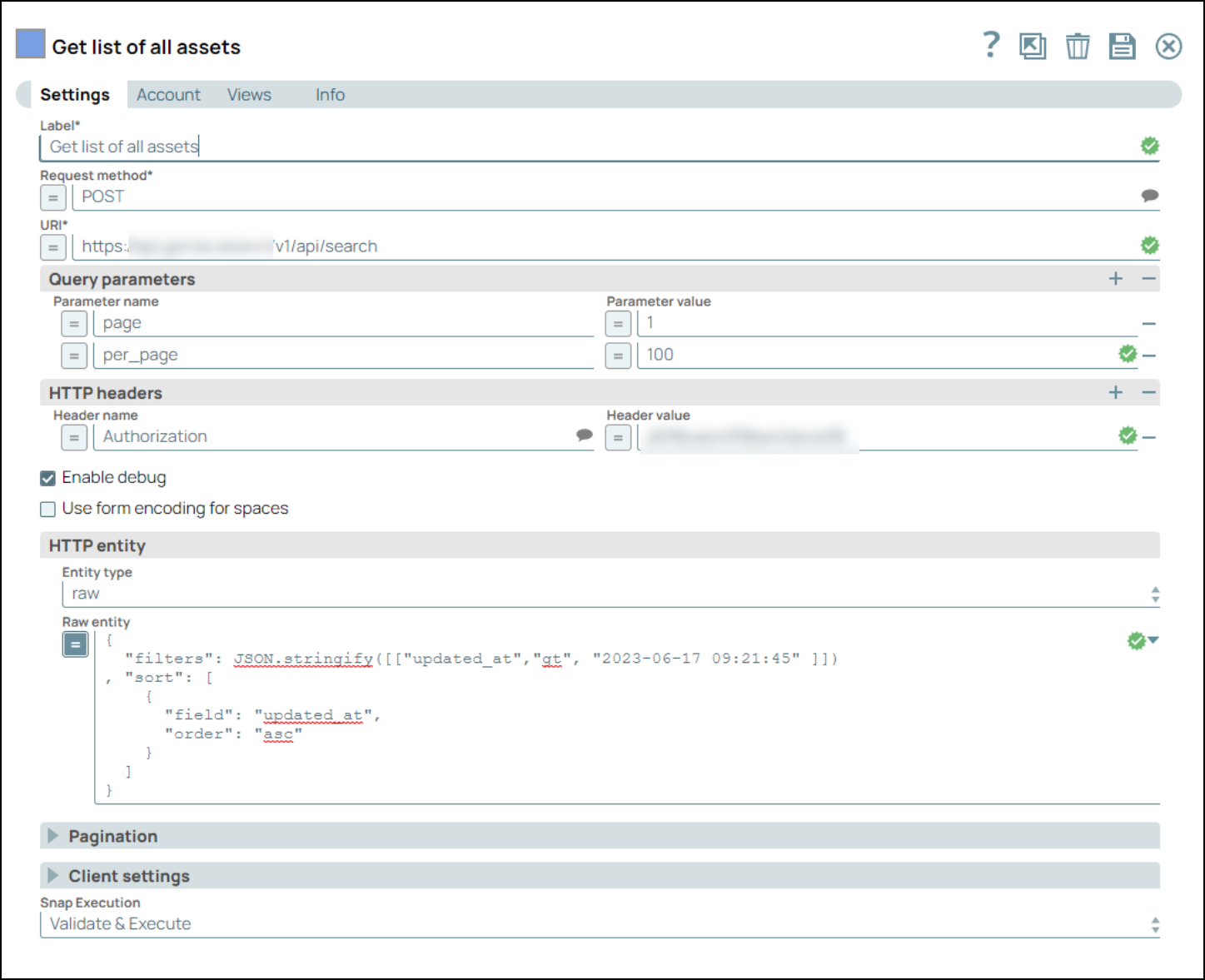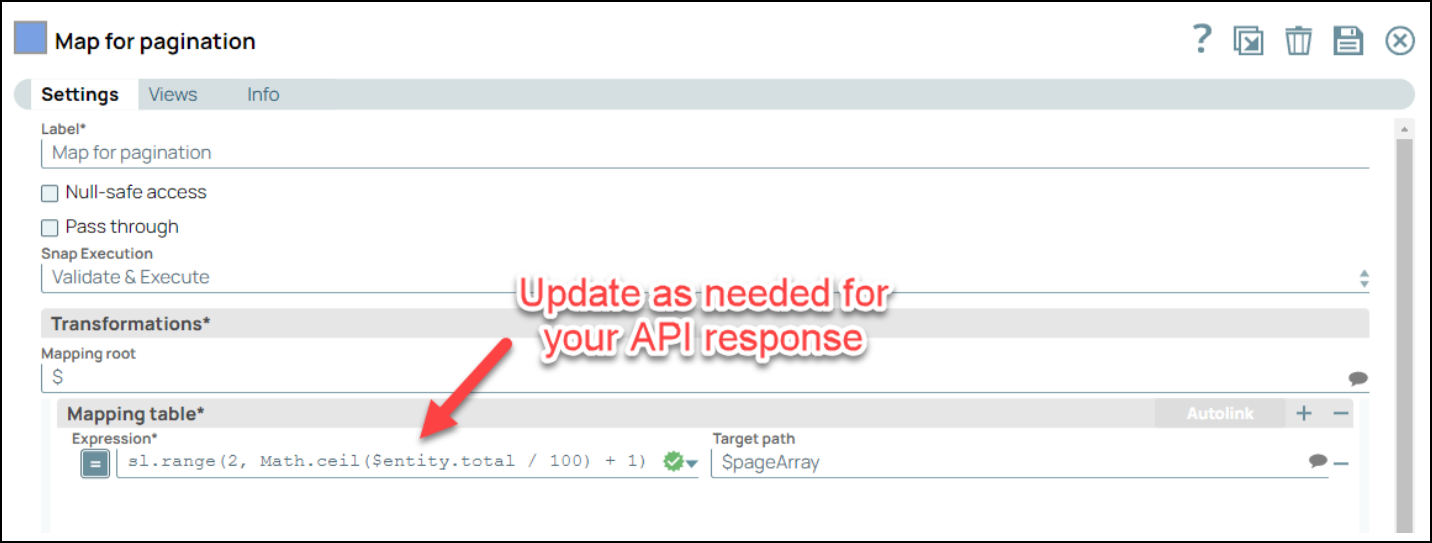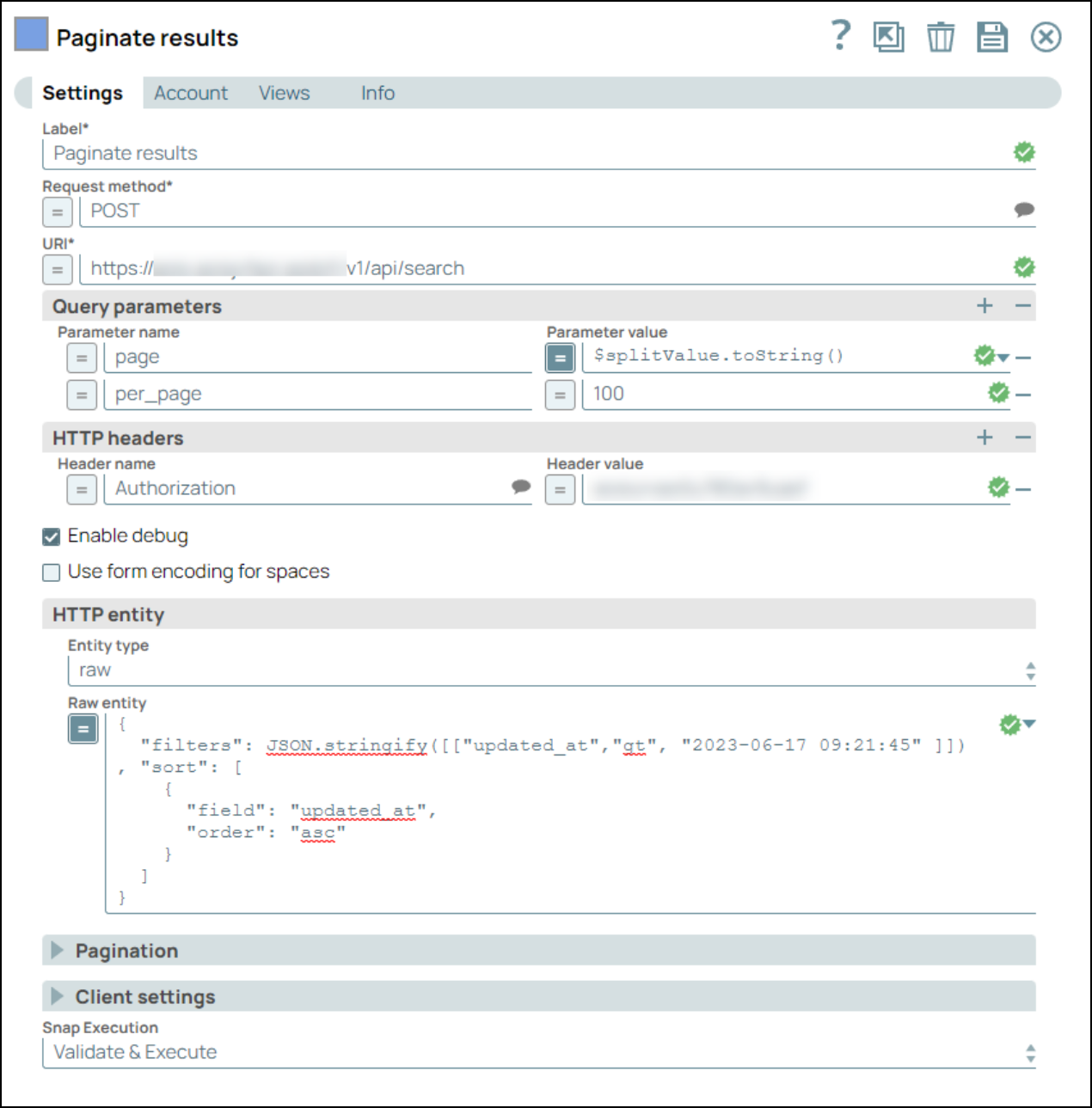Pagination
Overview
When making REST API calls to a specific endpoint using the GET method of the HTTP Client Snap, there might be a lot of results to return. In order to divide the results into multiple pages for easier handling, use the pagination settings. For example, when you make a REST API call to return all the pages from a Salesforce instance, the response can be thousands of pages, which is undesirable. You can use the Pagination settings to configure the Has Next field and set the number of pages to fetch to get a specific number of results.
Pagination for POST requests
The HTTP Client Snap does not automatically resend data in subsequent pagination requests. Therefore, we suggest the following solution to efficiently navigate through results from an API that requires the data to be resent with each request.
Problem : Endpoint API requires filter/sort criteria to be re-posted with each call.

- Configure the
HTTP Client
Snap to make an initial API
call (without pagination settings) to fetch the first result set.

- Configure the
Router
snap to perform the
following tasks:
- Pass through the first result set obtained from the HTTP Client.
- Determine if pagination is required based on specific criteria.

- Configure the Mapper snap to create an array
of page numbers to retrieve.

- Utilize the JSON
Splitter Snap to convert
the page number array into individual documents.

- Configure the
HTTP Client
Snap to make subsequent API
calls for the remaining result set. Ensure to exclude pagination settings for each
call.

- Connect the Union Snap to merge the retrieved results from all the API calls for further processing.
Downloads
- Download and import the Pipeline into SnapLogic.
- Configure Snap accounts as applicable.
- Provide Pipeline parameters as applicable.


